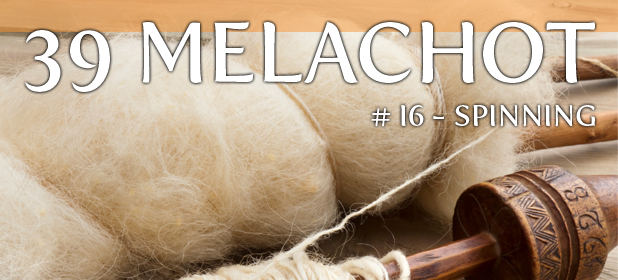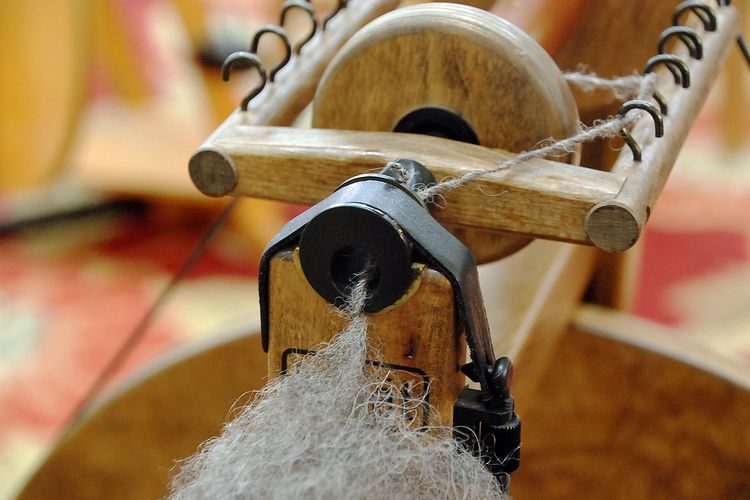 By this point, we have nice combed, dyed wool, ready to be spun into thread. Spinning entails the twisting of fibers together; this is the melacha of toveh. This melacha can be accomplished manually or with a tool. (The spinning wheel may be the most familiar instrument for spinning thread, though the spindle is a much more basic utensil that accomplishes the same goal.)
By this point, we have nice combed, dyed wool, ready to be spun into thread. Spinning entails the twisting of fibers together; this is the melacha of toveh. This melacha can be accomplished manually or with a tool. (The spinning wheel may be the most familiar instrument for spinning thread, though the spindle is a much more basic utensil that accomplishes the same goal.)
This is a melacha that most people probably won’t encounter too frequently. Twisting cotton to make a wick is a practical example of toveh.
One might think that twisting several threads together, such as to make twine or rope, is an example of toveh – and such is, in fact, the opinion of the Talmud Yerushalmi. However, the opinion of the Rambam is that this is actually an example of tying (kosheir). The operative difference between these two positions is that the Rambam likewise obligates one under the melacha of matir (untying) for unraveling such a rope. Toveh, on the other hand, has no such reciprocal melacha. (See Mishneh Torah, Hilchos Shabbos 10:8.)
This is just an introduction to the concepts of the melacha of toveh; it is not a substitute for a full study of the halachos.
